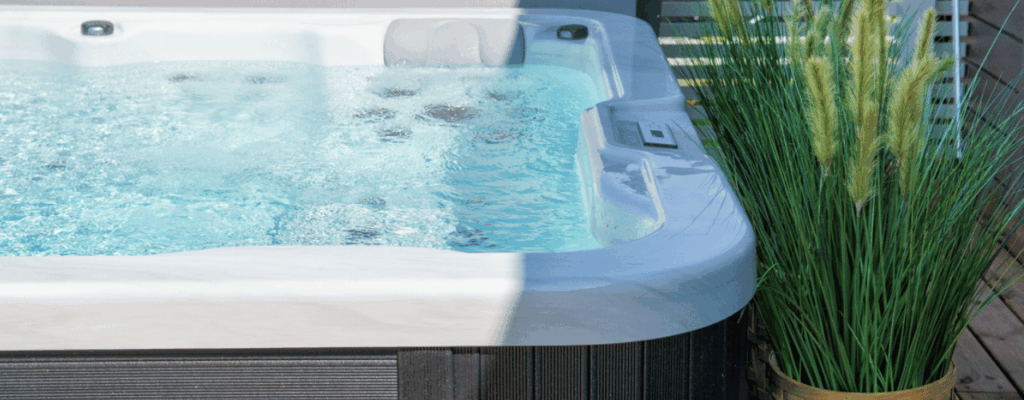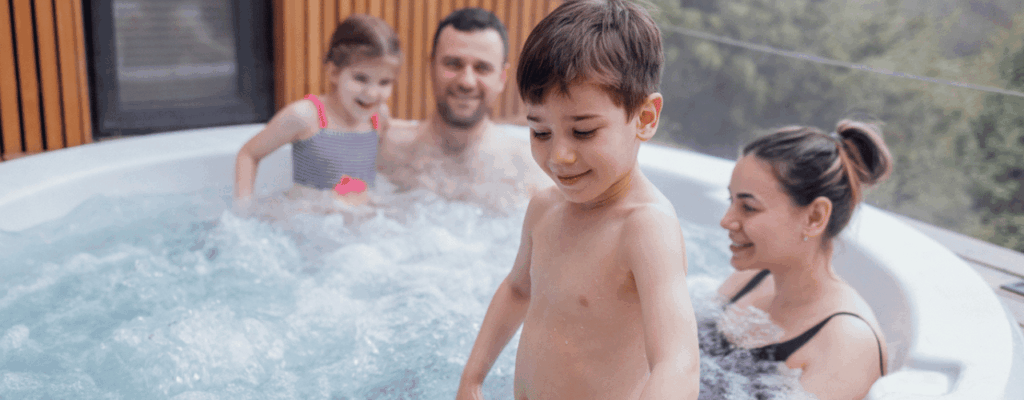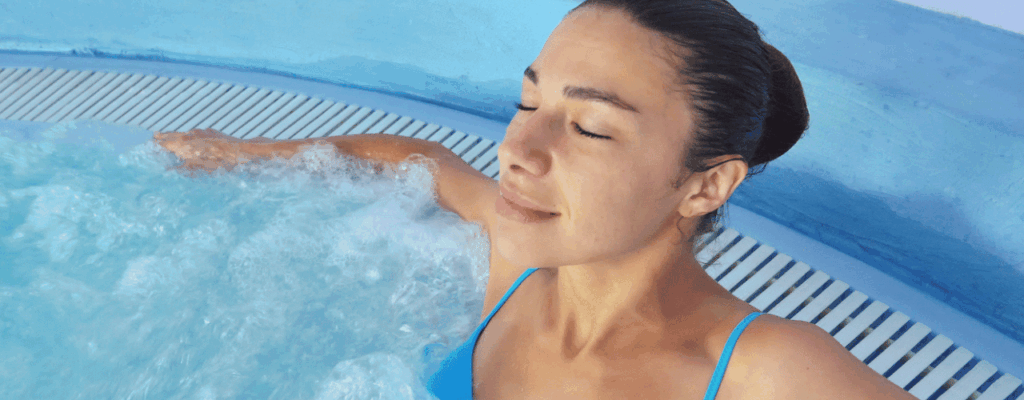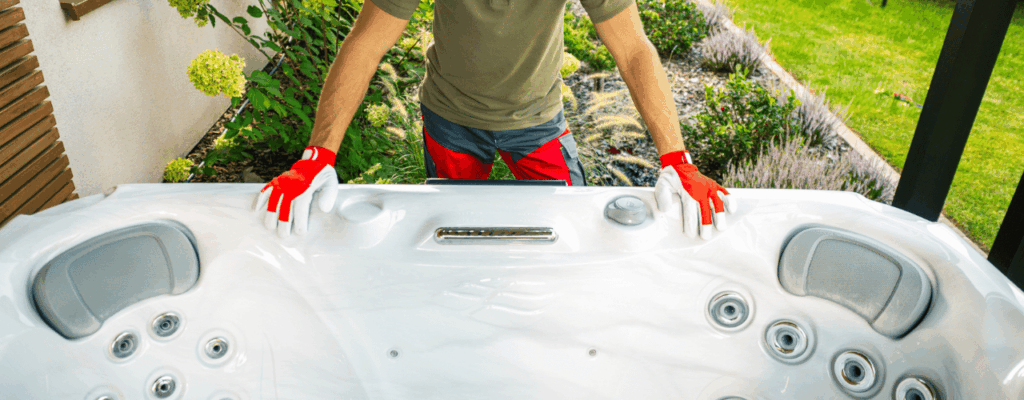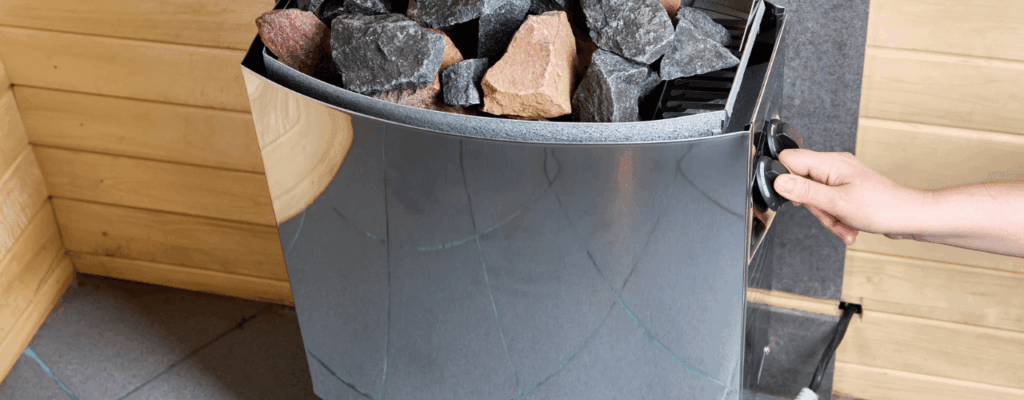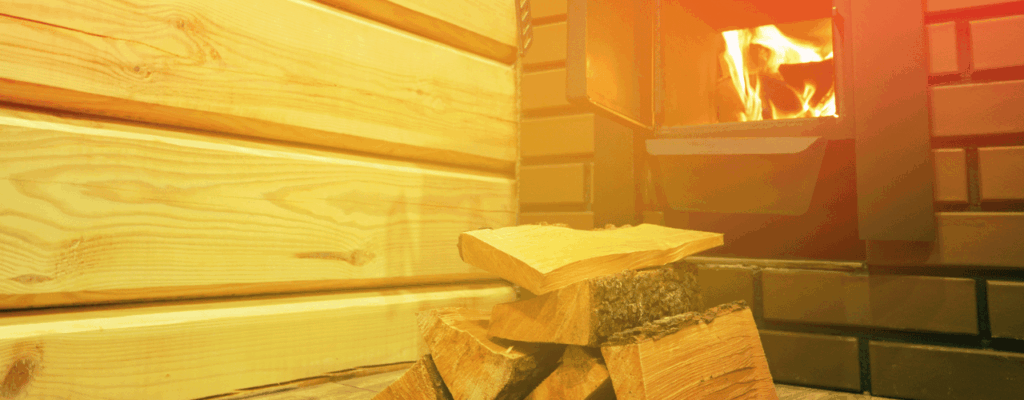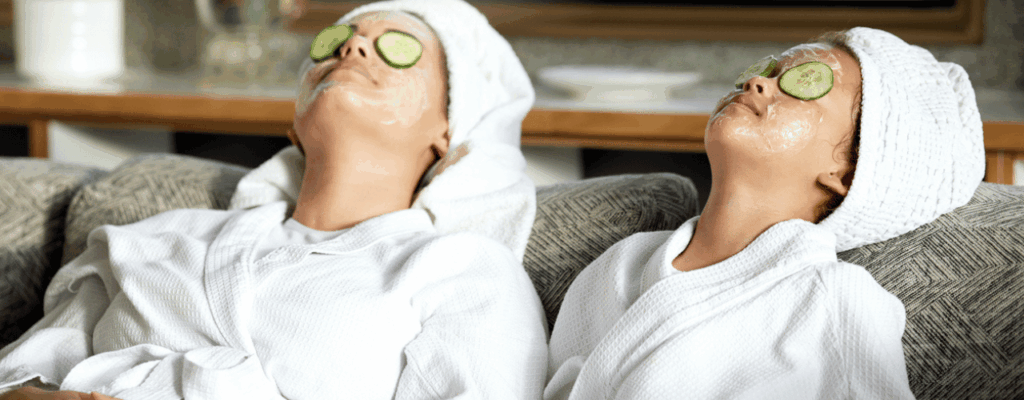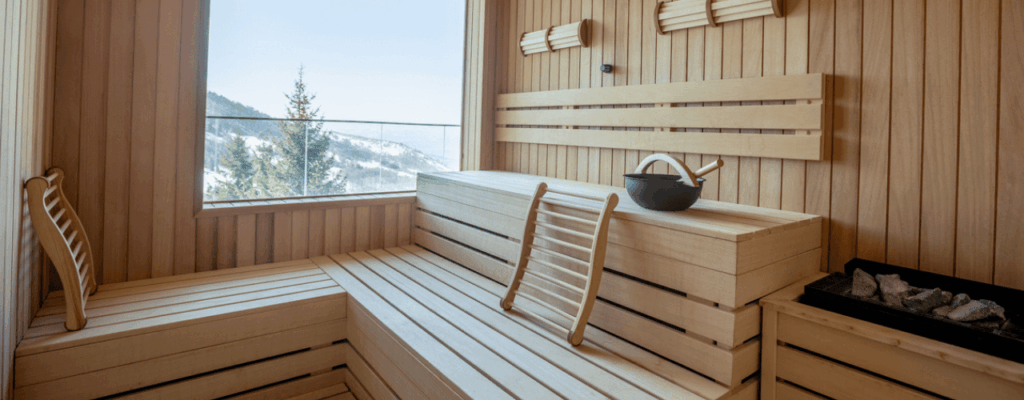
Small gardens can still support a proper home spa design. The key is to plan clear zones, leave space for the cover and servicing, and keep the spa close to the house for easy evening use. This guide gives you measured layouts and siting checks. It also adds model pointers so you can turn a compact plot into an outdoor wellness area you use all year.
What does a small-space home spa need to work week after week?
Start with function, then map the layout. Decide the main job of your home spa design first: calm evening soaks, lane-style training, or heat-and-cool therapy. In tight plots, each choice sets different spacing rules and product sizes. Keep paths direct and lighting low-glare. Make maintenance access simple so the routine sticks on busy weekdays.
How much space do I need for a hot tub, swim spa or outdoor sauna in a small UK garden?
Use these quick planning figures for small UK gardens.
- Hot tubs: Most family models measure about 2.0 × 2.0 m. Leave room for a cover lifter to swing and allow a service corridor of about 600 mm on at least one side.
- Compact swim spas: Most short trainers measure 3.5–4.5 m long by about 2.25 m wide. Plan a straight delivery path and room for steps.
- Outdoor saunas: Barrel and cabin formats vary. A small barrel can fit on a base from about 1.8 × 2.2 m with safe clearances and a lit approach.
When you’re ready to compare real models and sizes for your home spa design, browse our current ranges of Hot Tubs, Swim Spas, and Outdoor Saunas.
What are good small-garden layouts for a home spa?
Start with these home spa design layouts and adjust to your plot. Each layout keeps routes short, preserves service access and separates calm seating from movement.
Layout A: 3 × 5 m terrace for a weeknight soak zone
Quick specs: Footprint 3 × 5 m • Hot tub about 2.0 × 2.0 m • Service corridor about 600 mm on one side • Allow cover-lifter swing behind hinge
- This layout suits couples or young families focused on short evening use.
- Plan: A 2.0 × 2.0 m hot tub sits near the house wall to cut wind and shorten steps on cold nights. Place the steps on the garden side and add a slatted privacy screen to shield views. Leave about 600 mm on one side for servicing and cover lifter swing.
- Tip: Choose an insulated, low-upkeep model such as the Hydropool Self-Cleaning Hot Tubs range so maintenance stays light and you use it more often.
Layout B: 4 × 7 m corner for training and cool-down with space to relax
Quick specs: Footprint 4 × 7 m • Trainer about 4.0–4.5 m length • Service corridor about 600 mm on one side • Keep a clear, straight delivery path
- This layout suits solo training during the week and family time at weekends.
- Plan: Set a 4.0–4.5 m compact trainer along the long edge with a 600 mm service corridor on one side. Add a small outdoor shower and a bench opposite for cool-down. Keep a clear, straight approach from the door to the steps.
- Tip: Keep lighting low and indirect along the path. Set a timer so the water is ready when you are.
Layout C: 6 × 8 m garden end for a multi-zone wellness setup
Quick specs: Footprint 6 × 8 m • Swim spa about 5–6 m length + hot tub about 2.0 × 2.0 m • Service corridor about 600 mm • Separate base for sauna
- We advise this layout for families who want to soak, swim and use heat therapy in one area.
- Plan: Place a 2.0 × 2.0 m hot tub near the approach, a 5–6 m swim spa along the rear boundary with a windbreak, and a small outdoor sauna on a separate base to the side. Maintain a service corridor and a dry, non-slip route between the three.
- Tip: Sit the spa area slightly closer to the house than you think. Shorter walks mean more midweek sessions.
What base, power and delivery checks come first in the UK?
- Base: A level, load-bearing pad keeps shells stable. For hot tubs, many gardens use about 100 mm reinforced concrete or well-built decking. Swim spas need an engineered slab with drainage away from the shell.
- Power: Use an RCD-protected supply with a weatherproof local isolator fitted by a qualified electrician. New circuits in England and Wales fall under Building Regulations Part P.
- Delivery: Check gate widths, turns and overhead lines. If the side return is tight, plan a Hiab (lorry-mounted crane) or crane lift early to avoid delays.
If you want a model-matched plan for your home spa design, our team can confirm base spec, power route and access during a site survey. Start by sending us photos of the delivery path via Contact Us.
How can I have privacy and wind protection without losing space?
In small gardens, use slim, layered privacy that still lets air move. Slatted or louvred screens break sightlines without feeling boxed in, while evergreen hedging or tall grasses soften the edges and add calm. A louvred roof or simple pergola helps with glare and showers yet keeps the space open. Finish with low‑glare path lights on a timer so approaches feel safe at night and keep light spill down to avoid reflections in the water.
Which features make a compact home spa easier to live with?
Choose features that remove friction so the routine sticks. Continuous skimming and a floor vacuum keep water clear with less input; the Hydropool Self-Cleaning Hot Tubs range is a good place to start if you want lower weekly tasks. A tight‑fitting cover holds heat and keeps debris out, while simple eco schedules let you heat and filter around your day. Non‑slip, well‑lit paths make winter use easier, and leaving about 600 mm of service access on one side keeps maintenance quick.
How do running costs differ for outdoors, and how can I reduce them?
You can lower running costs with good insulation, a tight cover, smart schedules and sheltered siting. Keep the spa close to the house and out of the wind so it holds temperature between sessions. Use eco modes to pre‑heat only when needed, and rinse filters on a simple routine so the system does not work harder than it should. Pick efficient shells and covers, then review energy settings at handover and adjust once you see how often you use it. If your plan includes fitness, a short Swim Spa can replace trips to the gym and keep use consistent across the year.
Do I need planning permission for a small-garden home spa in the UK?
Most above-ground hot tubs and many garden sauna cabins fall under Permitted Development in England when you keep within height and placement limits and avoid conservation constraints. Raised platforms, listed buildings and certain locations may need approval. We flag any concerns during a site visit and can suggest compliant positions or product choices. For outdoor heat, compare options in our Outdoor Saunas category and we’ll advise on siting during your survey.
Which hot tubs, swim spas and saunas suit compact layouts?
Start with sizes that match the layouts above, then shortlist by features.
- Hot tubs for quick evening use: Family formats about 2.0 × 2.0 m with self-cleaning filtration and strong insulation. Explore our Hot Tubs.
- Compact trainers for small plots: about 3.5–4.5 m swim spas that balance lane quality with footprint. View Swim Spas.
- Outdoor saunas for contrast therapy: Barrel or small cabin models on a separate base with a clear, lit route. Discover Outdoor Saunas.
Why plan with The Hot Tub and Swim Spa Company?
We install across London and the South East every week and hold recent Hydropool UK awards for service and retail performance. Our in-house team handles survey, delivery, installation and handover, then supports you with servicing and parts. That continuity keeps your home spa design running well and easy to enjoy on busy weeknights.
Would you like to map your small-space home spa design?
Book a site survey and leave with a measured plan, access notes and a clear quote. Start here: Contact Us.
With the right layout and product choices, your home spa design turns a compact UK garden into a practical, calm routine you can keep all year.
